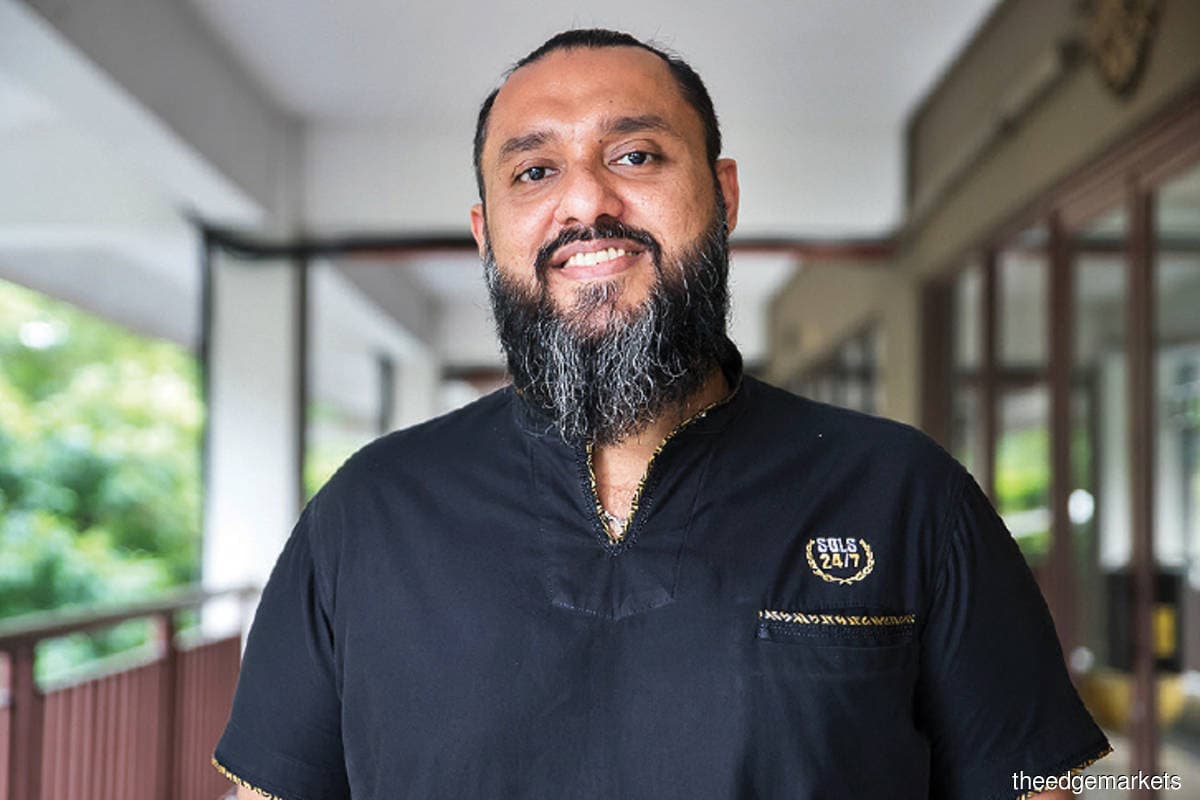
This article first appeared in The Edge Malaysia Weekly on September 7, 2020 - September 13, 2020
ACCESS to technology is the golden key to unlock the future for poor students in government schools, says a young changemaker who is leading a movement to transform their lives.
Raj Ridvan Singh, 37, is the founder of SOLS 24/7, an award-winning humanitarian organisation that works with underserved communities.
When the Covid-19 pandemic forced schools to be closed earlier this year, he saw that poor children would be the most badly affected because they do not have the digital devices that enabled their richer peers to continue their lessons remotely.
“That means today, because of digitisation, the middle and upper-middle classes will be able to continue getting education, while the poor get left further behind,” he says in a virtual interview with The Edge.
“The digital gap will become the digital education gap,” says Singh.
That prospect was underlined by a Ministry of Education survey in March which showed that about 36.9% of 900,000 students affected by school closures have no access to an electronic device to engage in e-learning programmes.
The extent of the problem is probably much larger than the survey suggests, says Singh, considering that some seven million children and young persons are engaged in education from the pre-school to tertiary levels.
With the self-isolation made necessary by the Covid-19 outbreak, Singh saw the need to go online to deliver the training programmes that are the hallmark of his organisation.
It turned out to be an eye-opener about the potential of the digital education platform.
SOLS 24/7 delivers a variety of education and social empowerment programmes with a team of over 200 members from more than 50 countries. It has trained over 400,000 participants in English, IT and character development since its establishment in 2000.
“We had zero experience delivering online,” says Singh. “Then, because of Covid-19, I told everyone we’re going to run our classes virtually.”
As a Google for Education partner, the team was familiar with Google tools. Being comfortable with the technology, they quickly put together a simple website for students to access.
“We were already teaching 1,500 to 2,000 students in Malaysia daily in seven locations before the outbreak. We thought we could hit 500 to 1,000 students online. But to our great surprise, we hit over 24,000 in three or four months. All this with less than 20 trainers,” says Singh.
Encouraged by the response, the team started training some government school teachers to use the Google for Education platform, guiding them on how to digitalise their lessons.
“It showed that you don’t need a three or four-year programme on digitalisation. Within 20 hours, any government school teacher could be ready and certified,” says Singh.
The programme, promoted by the Ministry of Education and Google, was offered free to all teachers. About 2,500 government school teachers from across the country, including Sabah and Sarawak, took the initiative to join the online sessions and were trained.
Singh speaks with deep feeling about the potential for upscaling this effort and transforming the national education system.
“We have the opportunity to flip the narrative, where we could become one of the first countries in the region to digitalise our entire education system, by tapping our communications infrastructure and our trainers. Most importantly, we have the money within the economy. It’s just whether we want to allocate it for the appropriate purpose,” he says.
Drawing on the experiences of countries like Indonesia and China, Singh is hopeful that the authorities will empower the experts in the field to lead the effort.
Indonesia realised the power of the digital medium, and the need to completely change the mindset of the people, he points out.
Having a young population that is very savvy about the digital environment, its president Joko Widodo (Jokowi) made Gojek co-founder Nadiem Makarim, “who understands digital technology inside out, and understands how to bring that technology to the masses”, the minister of education.
In Malaysia, however, the political will that is needed to make this happen in the education sector has been lacking.
When the Movement Control Order forced commerce to go online, businesses were quick to adapt.
“Businesses went dynamic, working places went dynamic, [but] why did the schools not become dynamic?” asks Singh.
For that to happen, he believes that younger people who are in tune with the digital world must be given the opportunity to advise the decision-makers.
“How can you have a bunch of people who don’t understand technology, who don’t know coding or programming, or have never been part of a tech start-up, lead the digital transformation of the entire education system for this country?” Singh asks.
“The challenge is to use the power of technology to enhance the delivery of the current education system. I believe that within two years of enduring the discomfort of adapting to change, we will be ready. The moment it becomes the new norm, Malaysia will fly because [we have an] advantage over other countries like Indonesia or Thailand in that our infrastructure is much better. But we are not leveraging it,” he says.
The Ministry of Education has been approached for comments on this issue. However, at press time, it had yet to respond.
“Can the education system in Malaysia be digitised in a short span of time? My answer is, you absolutely can,” says Singh.
Save by subscribing to us for your print and/or digital copy.
P/S: The Edge is also available on Apple's AppStore and Androids' Google Play.